Winter can be long and harsh without something to do. Ice fishing is a way of getting outside and embracing the winter season. It’s an adventure that can be experienced alone or with friends. Either way, the thrill of being on the ice and catching delicious fish is another way to enjoy what can be a very long winter.
Whether you’re a novice angler or an experienced fisherman, this article will guide you through the mesmerizing world of ice fishing or snow fishing, as some would call it.
From ice fishing essentials to purchasing the right gear and mastering the art of drilling the perfect ice hole, we’ll cover each step in detail. You’ll also learn valuable techniques for finding the best spots, selecting the right bait, and attracting fish like a pro.
As you immerse yourself in the frozen landscape, you’ll discover the serenity and tranquillity of ice fishing. It’s a chance to connect with nature, escape the daily grind, and experience the thrill of reeling in a big catch. What are we waiting for? Let’s get started and learn how to ice fish
Discloure: Posts may contain affiliate links. Purchases made through our links result in a small commission to us at no charge to you. We only recommend products that meet our brand standards based on testing and first hand use by our authors.
- Is it Necessary to Have a Fishing License for Ice Fishing?
- Safety Precautions for Ice Fishing
- Beginner Ice Fishing Essential Gear and Equipment List
- Finding the Perfect Spot
- Preparing the Ice Fishing Hole
- Techniques for Catching Fish Through the Ice
- What Types of Fish Can I Expect to Catch When Ice Fishing?
- What is the Best Time of Day for Ice Fishing?
- Tips for Staying Warm and Comfortable
- Ice Fishing Etiquette and Regulations
- Common Mistakes to Avoid When Ice Fishing
- Conclusion
Is it Necessary to Have a Fishing License for Ice Fishing?
In Ontario, you are required, by law, to possess a fishing license and an outdoors card. Under the age of 18 and over, the age of 65, you are not required to purchase a license.
Further Reading: Fishing for Beginners: Introductory Guide for the New Angler
Safety Precautions for Ice Fishing
Before casting your first cast, safety should always be your top priority. Your life is not worth what you might catch!
First and foremost, always check the ice thickness before stepping onto it. A minimum of four inches of clear, solid ice is generally considered safe for walking. However, if you plan to bring a vehicle onto the ice, make sure the ice is at least 8 to 12 inches thick. Don’t forget to wear a life jacket or, better yet, a flotation suit and carry safety picks or ice claws.
Additionally, make sure you dress appropriately for the cold weather. Layer your clothing to trap warmth, wear insulated and waterproof boots, and don’t forget to protect your extremities with gloves, hats, and scarves. It’s a good idea to carry a package of hot paws (hand warmers) should your hands or feet get cold. Alternatively, investing in a pair of heated gloves or socks can make your fishing experience much more enjoyable. Lastly, never venture out alone and always inform someone of your ice fishing plans and expected return time.
Further Reading: Heated Gloves: A Massively Easy Way To Beat Frozen Fingers
Beginner Ice Fishing Essential Gear and Equipment List
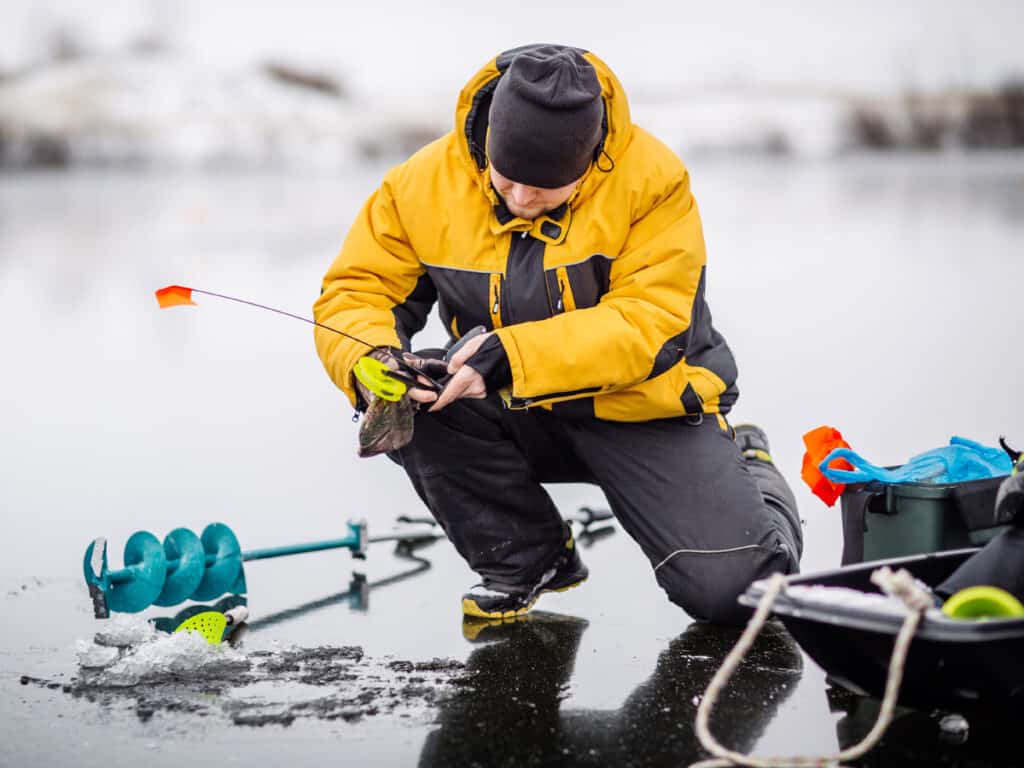
Now that we have covered ice safety – let’s look at what essential ice fishing gear you need for a successful ice fishing trip. Here are the central items you’ll need to have in your ice fishing arsenal:
Ice Fishing Rod and Reel
Opt for a short, lightweight, sturdy ice fishing rod and reel combo that can withstand harsh temperatures and handle the weight of larger fish. For the most part, in Ontario, you can use two lines.
Ice Auger
An ice auger is a specialized tool used to drill holes in the ice. Depending on your needs, choose between a manual or gas-powered auger. We use a manual one ourselves, and it works perfectly fine. The manual ice auger cuts holes rapidly and with relative ease.
Ice Shelter
While not mandatory, an ice shelter can protect you from the elements and make your ice fishing experience much more comfortable. You can opt for portable ice tents or permanent ice huts. Before deciding which route best suits you, check your local regulations. Some provinces/states will require you to register your ice hut.
Ice Fishing Tackle
Stock up on various ice fishing tackle, for example, ice jigs, spoons, and tip-ups. Carrying a vast selection of baits and lures allows you to target different fish species – just be mindful of what targetted fish is open for your waterbody, along with catch limits. Popular baits to use include worms, leeches, grubs, and maggots. Reminder: If you live in Ontario, we now have new laws regarding the transportation of live baitfish. You may want to check with your local regulations regarding live bait.
Ice Scoop
After drilling, you will use an ice scoop to remove ice shavings from the hole. It also allows you to keep the ice hole clean and prevents slush from forming, which can interfere with fishing.
Utility Sled
A sled is a practical way to transport your gear across the ice. Look for a sturdy sled with enough capacity to carry all your equipment and supplies. A suggested brand of utility sleds worth looking into is Pelican. Their sleds are durable and well-made. If towing by vehicle, the Sport 82 features a tow hitch, while the Trek 60 is perfect if venturing out on foot.
Ice Fishing Electronics
Investing in a fish finder, flasher, or underwater camera can enhance your ice fishing experience. These devices help you locate fish, see your lure, mark waypoints for future returns and understand their behaviour beneath the ice.
Other Ice Fishing Equipment and Accessories to Consider
Squatting for long periods is not fun. Consider bringing a small portable hunting or camping chair, or use the bucket you plan on keeping your catch in. Don’t forget to bring a first aid kit, sunglasses as the snow can be blinding, snacks, a warm beverage and your fishing license.
Finding the Perfect Spot

Choosing the right location is vital for a successful ice fishing trip. Fish behaviour will vary greatly on the body of water, time of year, and weather conditions. Below are a few tips to help you find the perfect ice fishing spot:
Preparing the Ice Fishing Hole
Drilling the perfect ice hole takes muscle, but the most crucial element is verifying that you are drilling into safe ice! Once you know the ice is safe, follow these steps to prepare your ice fishing hole:
- Mark Your Spot: Use a handheld GPS device or landmarks on the shore to mark the spot where you plan to drill your hole. Avoid drilling multiple holes in a small area.
- Clear the Snow: Remove any snow or slush from the surface of the ice using a shovel or an ice scoop.
- Measure Ice Thickness: Use an ice chisel or ice auger to measure the thickness of the ice. Drill a small test hole and measure the ice thickness at various points. Remember the safety guidelines mentioned earlier and ensure the ice is thick enough to support your weight.
- Drill the Hole: Once you’ve determined the ice thickness, use an ice auger to drill your hole. Keep the hole diameter between six to ten inches to allow easy access to fish and prevent them from escaping. This diameter will be dependant on the ice auger you use.
- Remove Ice Shavings: After drilling the hole, use an ice scoop to remove the ice shavings and create a clean and clear opening. Discard the shavings away from the hole to prevent them from obstructing your fishing area.
Here is a short video of a manual ice auger in action.
Techniques for Catching Fish Through the Ice

Now that you are all set up, it’s time to cast into the ice hole. Here are some effective ice-fishing techniques to get you started and increase your chance of success:
If you’re not having much luck, try adjusting the depth. Fish behaviour can change throughout the day, so experiment with different depths until you find where the fish are biting. Also, remember to watch your fish finder or underwater camera if you have one and adjust your technique accordingly.
Don’t forget to pay attention to your bait’s colour, size, and action, along with the speed and rhythm when jigging. You may need to swap lures or lure colours if you’re not having much luck.
What Types of Fish Can I Expect to Catch When Ice Fishing?
Besides panfish, depending on the area and regulations, you can target walleye, whitefish, northern pike, and trout.
What is the Best Time of Day for Ice Fishing?
The best time to ice fish is at dusk and dawn. The fish are hungry and will be more susceptible to your bait.
Tips for Staying Warm and Comfortable

Ice fishing is a chilly endeavour, but with some preparation, you can stay warm and comfortable throughout your trip. Here are some tips to help you beat the cold:
- Dress in Layers: Layering your clothing is the key to staying warm. Start with a moisture-wicking base layer to keep sweat away from your body. Add insulating layers such as fleece or wool, and finish with a windproof and waterproof outer layer. I prefer to wear my FXR snowmobiling suit as it’s warm and has flotation tech built right in. Depending on how cold it is, I find with the FXR floater suit that you can get away with wearing just a base layer.
- Protect Your Extremities: Your extremities are susceptible to frostbite. Make sure to wear insulated gloves, thick socks, and waterproof boots. Consider using hand and foot warmers for added warmth.
- Cover Your Face: Wear a face mask or a scarf to protect your face from wind and cold. Exposed skin is vulnerable to frostbite, so don’t forget to cover your nose, cheeks, and ears.
- Stay Hydrated and Nourished: It’s vital to stay hydrated even during cold weather. Drink plenty of warm fluids and eat high-energy snacks to keep your body fueled and warm.
- Use a Heater: If fishing from an ice shelter, consider using a portable heater like the Buddy from Mr. Heater to maintain a comfortable temperature. Follow the manufacturer’s instructions and ensure proper ventilation to prevent carbon monoxide buildup.
- Take Breaks Indoors: Don’t forget to take regular breaks inside your shelter or a nearby warming hut or car if you feel cold or tired. Warm up, rehydrate, and rest before heading back out.
Cold weather should never deter you from enjoying any outdoor activity. Learn how to layer clothing properly and brush up on survival techniques to stay warm and comfortable.
Ice Fishing Etiquette and Regulations
Of course, there are some etiquette guidelines that we should all be following. There is nothing worse than a disrespectful angler who thinks they own the ice! The following tips are not hard to follow or remember it’s just basic etiquette.
By practicing good etiquette and following regulations, you contribute to the sustainability of the sport and ensure that future generations can enjoy ice fishing as well. Not only that, it allows others who participate in various winter activities to enjoy the surroundings as well.
Common Mistakes to Avoid When Ice Fishing
Ice fishing can be a challenging activity, especially for beginners. There are a few common mistakes that you can avoid to increase your chances of success:
Conclusion
Ice fishing is a captivating activity that allows you to embrace the winter season and connect with nature. With the knowledge outlined in this guide, you are well-prepared to embark on your ice fishing adventures. Remember to prioritize safety, invest in the right gear, and research your fishing locations. You’ll quickly become a skilled ice angler by spending time perfecting your technique, mastering lures and learning to read the behaviours of fish and the environment.
Now, bundle up, grab your fishing gear, and get ready to immerse yourself in the mesmerizing world of ice fishing. The frozen lakes are waiting for you to discover their hidden treasures. Happy fishing!
Bookmark this post on Pinterest for future reference!
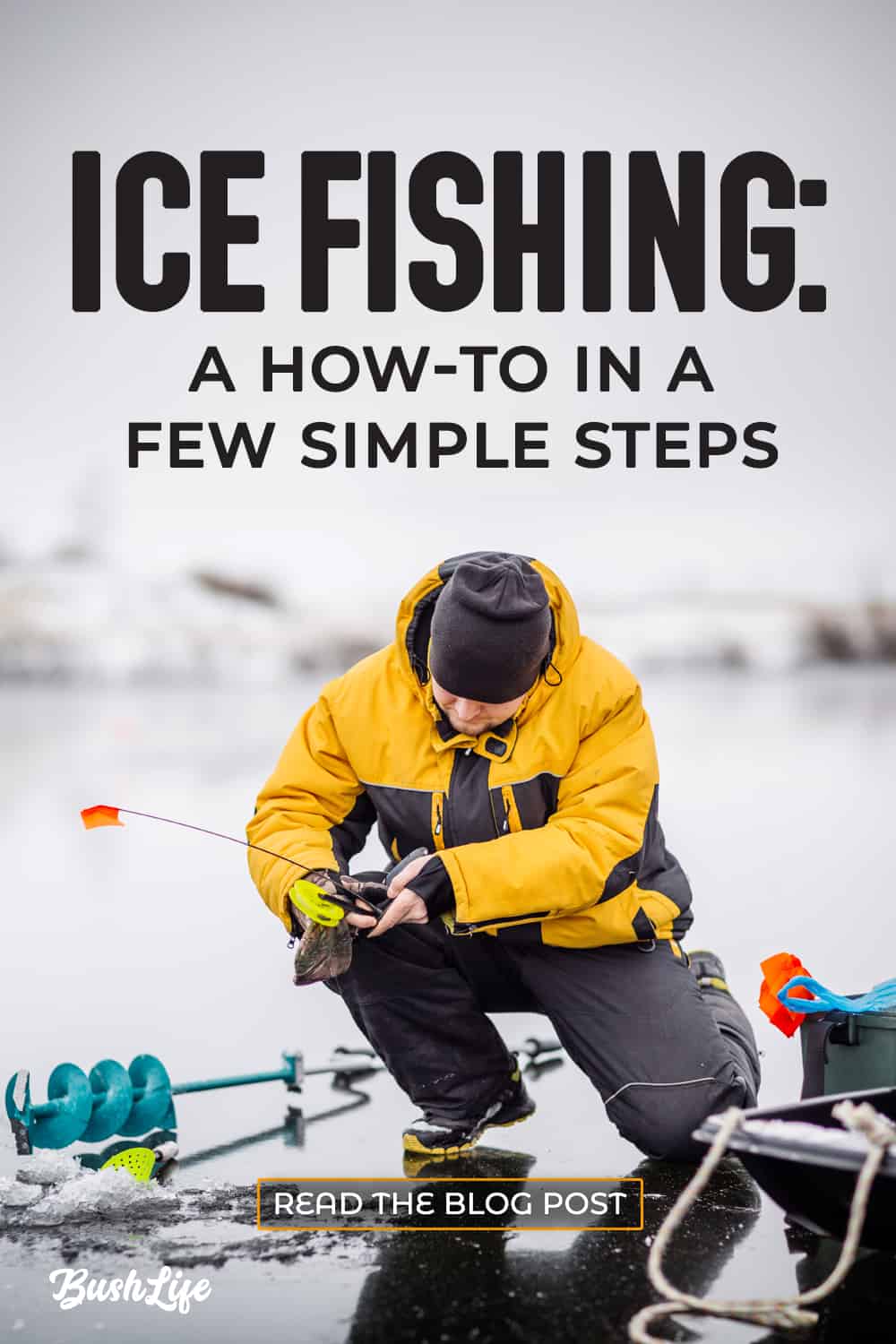



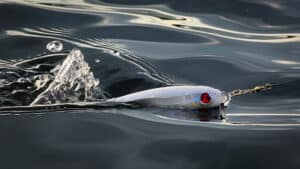
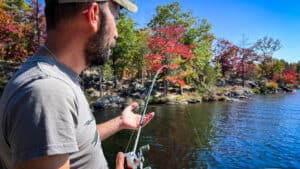
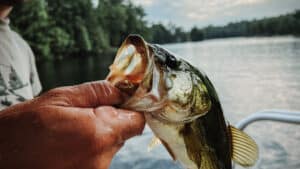
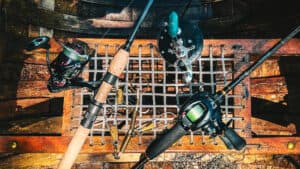
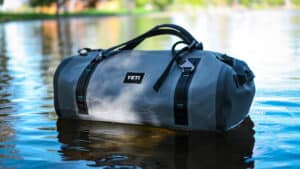

💯
I used to see many in the lake doing ice fishing. It must be fun.
Ice fishing is fun, it also gives you something to do and gets you out during those long winter months. 🙂